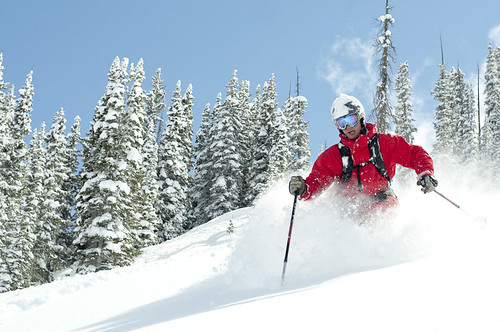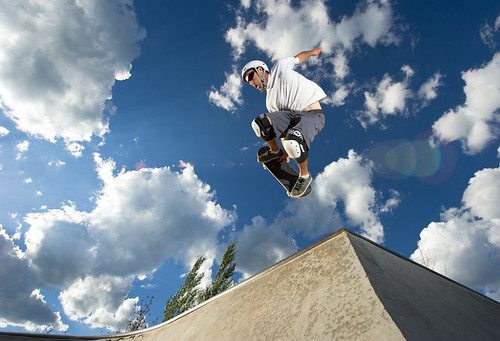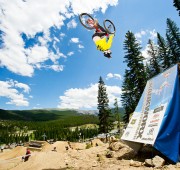20 Tips Every Action Photographer Must Know
The world of action photography is very diverse and difficult compared to most other aspects of photography. Here are 20 key tips that will make your life easier.
#1: Dress smart. When it’s winter, overdress. The athletes will be moving a lot so chances are they are staying warmer than you because their blood is flowing. Wear more gear than you think you’ll need and you’ll have a much happier and more successful shoot.
#2: Always zip up your camera bag. Every skiing photographer will forgot this and get their backpack packed full of snow. Same goes for dirt sports, dust get’s everywhere and is a pain to clean off your gear.
#3: Go wide for excitement. A wider angle will get you a much more dramatic shot, if that’s what you’re going for…
#4: Make sure you’re in a safe spot where you won’t get run over by the athlete, but get in as close as possible when you can for super sick shots.
#5: Keep that shutter speed up! Action is fast, if you aren’t going for motion blur, make sure your shutter speed is faster.
#6: Alway’s carry a lens cloth. Action sports take place in elements and your lens will get sprayed with water, covered in dust, and splattered with mud.
#7: Avoid guy in the sky. It may be cool to you, but the images won’t sell. Look at any action sport magazine and you’ll notice the take-off or landing (often both) is also in the shot. Seek to tell stories with your images.
#8: Get a low (or high) angle. More extreme angles help capture how risky or rough the sport really is. People love exciting images and getting low or high angles will provide excitement.
#9: Work closely with the athlete. If they say a shot won’t look good, trust them. If they have a suggestion for an angle, check it out! They know the sport and look at published pictures of it constantly.
#10: Fill flash is huge for low angles. The sun is not below the athlete so you’re going to need some light to fill in the athletes face and eyes.
#11: Shoot sunrises and sunsets. You may not think this applies to anyone other than landscape photographers, but try it once and you won’t want to shoot midday light ever again. Just sayin’…..
#12: Get your athletes to wear bright clothing!
#13: Show the environment. Most sports take place in cool and unique locations. This is a big part of the reason that athletes love the sport. Showcase the athlete in their element to make the image authentic, enjoyable, and exciting!
#14: Watch the background. The athlete should stand out, not blend into the scenery rendering them invisible. We aren’t playing “Where’s Waldo” here… This is where going low and wide usually works, and why the athlete should wear bright clothing. The sky is a lot less complex and detailed then other background elements making it a perfect background for an athlete if you can make that work.
#15: Shoot telephoto. It may sound crazy since #3 is go wide for excitement. But a very zoomed shot will look more exciting than a standard focal length. Choosing zoomed or wide will make for more interesting shots.
#16: If your shutter speed allows, stop down your lens a bit to keep everything in focus and land more sharp shots. That f/2.8 shot may look incredible with the blurry background, but often times it will be tough to get the moving subject in perfect focus. That being said, still try for the f/2.8 at times!
#17: If other photographers are capturing the same angle, move away. Shoot a different angle, and find a unique vantage point. Try to build the crowd into the photo, or use a tree to frame the image. Anything you can do to be different will most likely be beneficial.
#18: Shoot into the sun. I know it sounds crazy, but in certain situations will create amazing images. Star it out by shooting f/16 or smaller, just make sure there are no clouds (even tiny ones) anywhere near the sun or the star will be ruined. Silhouettes are very cool in the right situation. Otherwise you’ll need a high-ISO or a flash to capture the athlete in detail and color. To learn more check out this article: Shoot into the Sun.
#19: Focus requires a bit of strategy and planning. If you’re shooting from the side, try pre-focusing on an object that is the same distance away from you as the athlete will be. If they are jumping off of something, pre-focus on the landing, or something in the middle. If it’s head-on and mostly random, lower your auto-focus point count in your camera menu, and try shooting in continuous mode. Not every picture will be sharp, but with bit of practice the number will increase! Check out this article for more: Nailing Focus.
#20: Look at magazines for the sports you want to shoot. If you don’t know much about the sport, this will show you what types of shots people who ARE into the sport like to see. Don’t copy these (unless you can do it better), just see what makes them work and come up with your own ideas.

















on
Hi
Thanks for a great article, shedding some light on different ways of getting great shots of action instead of the normal stand and deliver type shots which we all get. Like the park about being extreme from and angle point of view and shooting into the sun
Thanks